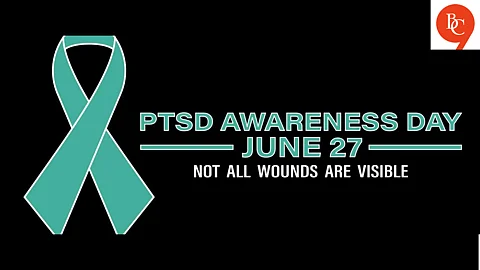

PTSD (Post-Traumatic Stress Disorder) affects millions worldwide, often silently. While it’s commonly associated with war veterans, PTSD can emerge from any traumatic experience—accidents, assault, natural disasters, loss, or childhood abuse. The real question isn’t who has PTSD, but how we, as a society, support those who do.
What Is PTSD?
PTSD is a mental health condition that can develop after a person has experienced or witnessed a terrifying event. It isn’t just feeling sad or anxious—it’s a complex neurological and emotional response to trauma.
Common symptoms include:
Flashbacks or nightmares
Hypervigilance or jumpiness
Avoidance of triggers or places
Numbness, detachment, or emotional withdrawal
Difficulty sleeping or concentrating
And yet, many people live with it undiagnosed, afraid to speak up due to stigma or lack of awareness.
PTSD in Daily Life: It’s Closer Than You Think
You might not even realize that someone around you—your friend, coworker, or partner—is managing PTSD. That’s because it often wears a well-dressed mask. People with PTSD can be high-functioning, humorous, and driven—but they may also feel deeply exhausted from the weight of hyper-awareness and emotional exhaustion.
Lifestyle Changes That Support PTSD Healing
While professional therapy is the foundation of treatment, lifestyle choices play a crucial role in helping manage PTSD and related symptoms. Here's how:
1. Mind-Body Practices
Yoga, tai chi, and breathwork can help reconnect the body to a sense of safety.
Mindfulness meditation is shown to reduce flashbacks and anxiety over time.
2. Food as Fuel for the Brain
Diets rich in omega-3s, magnesium, and B vitamins support brain health.
Reducing sugar, caffeine, and alcohol can help stabilize mood swings and sleep.
3. Creating Safe Conversations
A lifestyle that includes open, non-judgmental dialogue is a major buffer against shame.
Journaling, peer support groups, or trauma-informed workshops can help express suppressed emotions.
4. Digital Boundaries
PTSD can be worsened by doomscrolling, violent content, or overwhelming stimuli.
Practicing digital detoxes and curating peaceful online spaces can help lower emotional reactivity.
5. Designing a Soothing Environment
Aromatherapy, warm lighting, and weighted blankets may help reduce anxiety.
Keeping a trauma-informed, minimal, cozy home space can make a huge difference in daily life.
How to Support Someone with PTSD
You don’t need to be a therapist to be supportive. Here’s what really helps:
Listen without “fixing”: Let them lead the pace of the conversation.
Respect their boundaries: Don't push them to confront triggers.
Normalize therapy: Encourage professional help without shame.
Offer calm presence: Often, it’s your energy that speaks more than words.
National PTSD Awareness Day isn't about labeling. It’s about creating an environment where people can heal without hiding. We must move from dismissive reactions like “It’s all in your head” to compassionate listening like “How can I support you?”
When we hold space for trauma survivors, we foster not just awareness—but a culture of healing.
